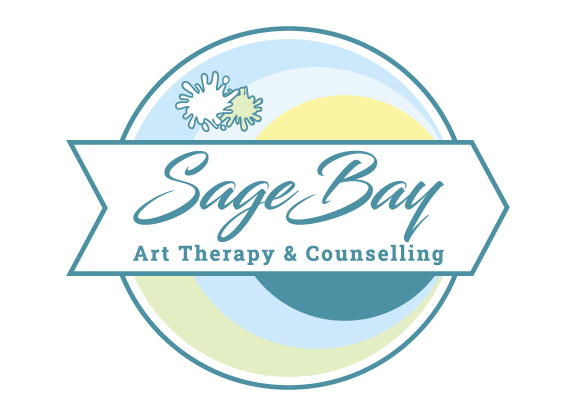“Art therapy is a broad term with deep roots. When properly facilitated, it can draw on our innate creativity to help us heal, grow, and transform.”
Canadian Art Therapy Association
When I tell people I’m an art psychotherapist, the response I get most often is:
Cool! But what exactly is art therapy?
I say that art therapy improves people’s health & quality of life through art-making. But this is too short and simple an answer, really. People can’t grasp what art therapy truly is or does until they try it for themselves. After a session or two, I watch them finally understand and experience how it helps harmonize their inner and outer worlds.
Turns out, it’s far more meaningful and impactful than doing arts & crafts!

Benefits of Combining Art & Psychotherapy
Making invisible concepts visible (thoughts, feelings, challenges, solutions)
Using colour and form to advance emotional literacy
Self-regulating and reducing harm through artmaking
Co-regulating and trust-building through artful non-verbal communication
Experiencing fuller self-expression
Creating art as an exercise in creating life
Accessing insights from the subconscious
Hands-on meaning-making tool
Who is Art Therapy for?
Everyone is creative! You have brought into being what was once only a thought countless times. That’s creativity. No art experience is required to do art therapy. We offer convenient in-studio, at-home, or online sessions - options for everyone to engage.
Standard sessions last 1 hour and can be adjusted to meet individual or group needs.
Children (5+), teens, adults, and seniors
People of all abilities and identities who have a willingness to express and explore themselves creatively
Anyone with access to basic art materials (colouring pencils/markers & paper) or preferred art mediums (e.g. clay, paint, pastels, etc.). Specific art supplies can be provided or mailed at cost.
Folks with or without health insurance for psychotherapy
What can I expect in a session?
Each art therapy session is designed to meet the needs and goals of each client. In art therapy, we focus on the process, insights, and benefits of art-making rather than worry about creating a perfect (or imperfect!) product. This helps us shift our gaze from an uncertain future or tumultuous past to the OKness, or even the hidden joy of the present moment. From there, we dialogue with the art towards solutions for improved health and quality of life. Yes, the art has a voice!
One Example of a 60-min Art Therapy Session
Check-in: Draw a shape that represents how you’ve been feeling since our last session. Celebrate progress on commitments since the last session and reflect on what moving forward looks like.
Focus: Discuss what’s on your mind while regulating by doodling, colouring, or working on the art project of your choice. I can offer you art prompt ideas relevant to your current life challenges and goals.
Check-out: How is your feeling line now? Reflect on the value of the session. Write down your commitment to follow-up on at the next session.
Examples of art therapy invitations
Remember:
There are no prescribed correct or incorrect responses.
We are looking for authentic self-expression over a beautiful piece.
We learn from reflecting on the process, not just the final product.
-
Describe them.
What do the lines need in the short term? In the long term?
How does this metaphor relate or not to your life?
Are the lines oriented to the past, present, or future?
-
Share insights that came up while sculpting.
-
What colours, mediums, and shapes did you choose and why?
-
Read the poem aloud. What is the main theme of the poem? How does it relate to your life? What is the deeper meaning of the poem? What will you do with this information?
-
Use a scale from +10 (hyperaroused/anxious) to -10 (hypoaroused/depressied).
What are the signs that your tolerance is changing (in both directions)?
How do you downregulate safely? How do you upregulate safely?
-
What genre of music is it? Why?
What instruments are in the band? Which would you play and why?
How does this help you achieve your goal?
-
Describe the feelings in your body in both positions.
What are you doing that moves you toward the unstuck position?
-
1. Yours
2. An earthworm
3. A shooting star
-
What symbol did you choose and why?
Who does your symbol know you can become?
Where does the beading want to live to remind and support you of your resilience and healthy coping?





